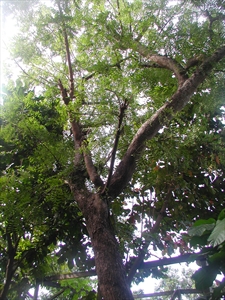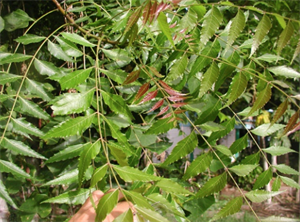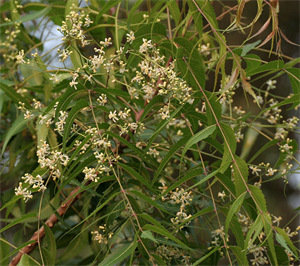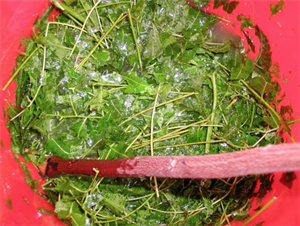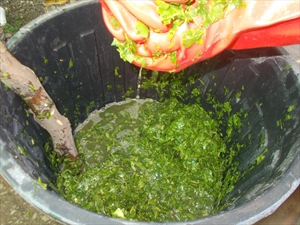- Worldwide. South and Southeast Asia, Africa, South and Central America, the Caribbean, Oceania. In Australia, Fiji, Solomon Islands, and many other Pacific island countries.
- Fast growing evergreen tree, 20 m high, mahogany family, long flexible leaves with 20-30 paired leaflets; fruits oval, yellow when ripe, 3 cm long.
- Used as pesticide against moths, aphids, leaf and plant hoppers, leaf miners, grasshoppers, scale insects, whiteflies and nematodes.
- Spray in evening to avoid leaf burn and destruction by sunlight.
- Use fresh:
- 1 kg/5 litre water, soak overnight (preferably pound first, or after soaking).
- Squeeze leaves, strain, add about 20 g soap, and use.
- Use dried:
- Collect leaves, dry and store.
- Add 250 g/5 litre water, soak overnight, pound, soak again overnight.
- Squeeze, strain, add about 20 g soap, and use.
- Use seeds:
- Select yellow fruit, dry 3-4 days in the sun.
- Pound to remove seed, winnow; pound seeds to fine powder.
- Add 250g/5 litre water, mix, soak 24 hours.
- Strain, add 20 g soap, and use.
Pacific Pests, Pathogens and Weeds - Online edition
Pacific Pests, Pathogens, Weeds & Pesticides
Neem (preparation & use) (402)
Neem
Azadirachta indica
AUTHOR Grahame Jackson & Kazuko Ota
Information from Azadirachta indicata (Neem) Bio-NET-EAFRINET. (https://keys.lucidcentral.org/keys/v3/eafrinet/weeds/key/weeds/Media/Html/Azadirachta_indica_(Neem).htm); and Azadirachta indica Wikipedia. (https://en.wikipedia.org/wiki/Azadirachta_indica); and from Campos EVR (2016) Neem oil and crop protection: from now to the future. Froniersin Plant Science. (https://www.frontiersin.org/articles/10.3389/fpls.2016.01494/full). Photo 3 JM Garg Azadirachta indica in Hyderabad, India.
Produced with support from the Australian Centre for International Agricultural Research under project HORT/2016/185: Responding to emerging pest and disease threats to horticulture in the Pacific islands, implemented by the University of Queensland and the Secretariat of the Pacific Community.
